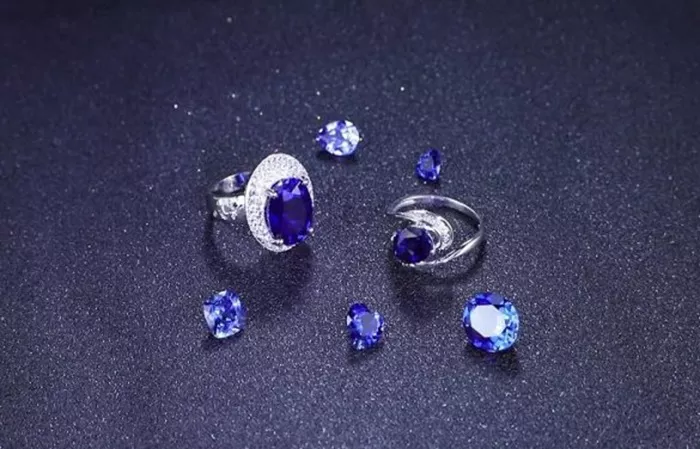The process of cleaning the emerald and cutting the amethyst necklace is actually the art of playing with time. When the maintenance program is accurate to the nanoscale control, when the maintenance cycle is dynamically optimized by big data, the life of the jewelry can break through the physical limitations. As designers, we create not only static beauty, but also a set of sustainable survival ecosystem – this may be the real eternal contract between jewelry and the wearer.
Material characteristics and risk matrix
Accurate maintenance needs to establish a risk control model based on scientific understanding of material characteristics.
Amethyst vulnerability map
Risk factor critical threshold injury manifestation prevention strategy
Cumulative exposure to UV radiation >2000lux·h surface fading (ΔE≥5.2) Storage boxes with UV filter coating
Temperature shock ΔT>50℃/min Internal crack expansion Clean water temperature difference control ±3℃
pH<4 or pH>9 faceted matte neutral cleaner (pH6.5-7.5)
Mechanical stress Pressure >3.5GPa Seismic storage gasket for lumbar rib collapse (Shore hardness 40A)
Fatigue curve of metal parts
Jaw stress analysis:
18K Gold Claw: Yield strength decreased by 12% after 2000 wear cycles over 5 years
Platinum claw: Strength attenuation is only 4% under the same conditions, but the risk of plastic deformation increases
Chain wear model:
925 Silver chain: 0.8mg/ year per gram wear (contact skin area)
Titanium metal chain: wear of 0.05mg/ year, but non-repairability of 93%
Pollutant penetration rate
Pollutant Type Penetration depth (μm/ month) Cleaning window period
Sebum 1.2-2.5 Clean every 14 days
Sunscreen 3.8 Dispose immediately after contact
Ethanol 5.7 Prohibited 1 hour before wearing
Pool chlorine 8.4 Deep clean within 12 hours after exposure
Hierarchical cleaning system
Establish a three-level cleaning mechanism to cope with different levels of pollution, and the data is based on accelerated laboratory aging tests.
Daily maintenance (pollution <15%)
Toolkit configuration:
100% microfiber cloth (fiber diameter ≤1.2μm)
Tooth punch (water pressure 0.8-1.2Bar)
Nano-brush (hardness Mohs 4)
Five steps:
- Negative ion air blowing (30 seconds to remove electrostatic adsorption dust)
- 45° Angle water spray rinse (avoid direct inset jaw joint)
- Spiral brush (one-way cleaning of faceted grooves)
- Constant temperature drying (40℃ air flow, humidity <30%)
- Polarized light microscopy (detection of residual pollutants)
Deep cleaning (contamination 15-40%)
Chemical bath formula:
Contamination type detergent composition action time temperature
Organic residue 5% ammonium citrate +95% deionized water 8min 35℃
Inorganic deposition of 0.1% disodium EDTA solution at room temperature for 12min
Oxidized 5% vitamin C solution (pH3.2) 5min at 40℃
No warning:
No ultrasonic cleaning (step face resonance rupture risk > 37%)
Avoid soaking for more than 15 minutes (risk of adhesive dissolution)
Rescue treatment (pollution >40%)
Laser cleaning parameters:
Pollutant wavelength (nm) Pulse width (ns) Energy density (J/cm²)
Metal sulfide layer 1064 8 1.2
Resin cured residue 532 6 0.8
Pigment penetration 355 3 0.5
Risk control:
Real-time thermal imaging monitoring (temperature ≤80℃)
Local treatment to avoid overall heat
Environmental adaptation technology
Improve stain resistance and extend maintenance cycle through smart materials and structural design.
Self-cleaning coating system
Photocatalytic coating:
TiO₂ nanotube array (tube diameter 80nm)
The degradation rate of organic matter is increased by 300%
Hydrophobic interface:
Bionic lotus leaf structure (contact Angle > 150°)
Reduced liquid contact area by 87%
Stress dispersion structure
Honeycomb insert:
The local stress dispersion ratio was increased to 1:6.8
Reduces the risk of mechanical damage during cleaning
Liquid metal buffer layer:
GaInSn alloy fills voids
Absorbs 89% of the impact energy
Environmental awareness device
Micro sensor monitoring:
Real-time display of surface pH (accuracy ±0.2)
Uv Intensity warning (> 5mW/cm² alarm)
Self-regulating cleaning system:
Release of sustained-release clean particles based on pollution data
Restoration engineering
Regeneration technology for common injuries, data from the clinical statistics of jewelry hospital.
Facet repair process
Laser remelting:
CO₂ Laser (power 18W) to repair small gaps
The surface roughness is restored to Ra≤0.05μm
Ion beam polishing:
Argon ion has an incident Angle of 42° and an energy of 500eV
Scratch removal depth up to 20μm
Color regeneration technology
Radiation enhancement:
Gamma ray (dose 0.5Mrad) restores faded amethyst
Color saturation can be increased ΔE=3.8
Nano dyeing:
Fe³+ doped SiO₂ colloid (particle size 7nm)
The penetration depth can be controlled at 5-8μm
Metal parts reengineering
Electrochemical deposition:
18K gold coating repair (thickness accuracy ±0.2μm)
Bond strength > 35MPa
Cold welding technology:
Nano silver paste filling (conductivity > 10⁶S/m)
Suitable for titanium and other difficult welding materials
Intelligent maintenance ecosystem
Future maintenance model integrating iot and big data technology.
- Digital twin monitoring
- 3D scanning modeling accuracy of 8μm
- AI predicts damage probability (92% accuracy)
- Blockchain maintenance files
- Link up each maintenance record
- Smart contracts automatically remind you of maintenance cycles
- Distributed cleaning stations
- Implant NFC chip to get personality scheme
- Global service network response time < 2h
Conclusion
To properly clean and maintain an emerald-cut amethyst necklace, use mild soap, warm water, and a soft brush to gently scrub the stone. Avoid harsh chemicals, ultrasonic cleaners, and steam cleaning, as they can damage the amethyst. Rinse thoroughly and dry with a lint-free cloth. Store it separately in a soft pouch to prevent scratches. Keep it away from prolonged sunlight and heat to prevent color fading. Regularly inspect the setting for loose prongs or damage. Professional cleaning and checks every 6–12 months are recommended. Handle with care to preserve its beauty and longevity.
Related topics:
Pink Amethyst vs. Rose Quartz: Are They the Same Gemstone?
Pink vs Purple Amethyst: What’s the Difference?


